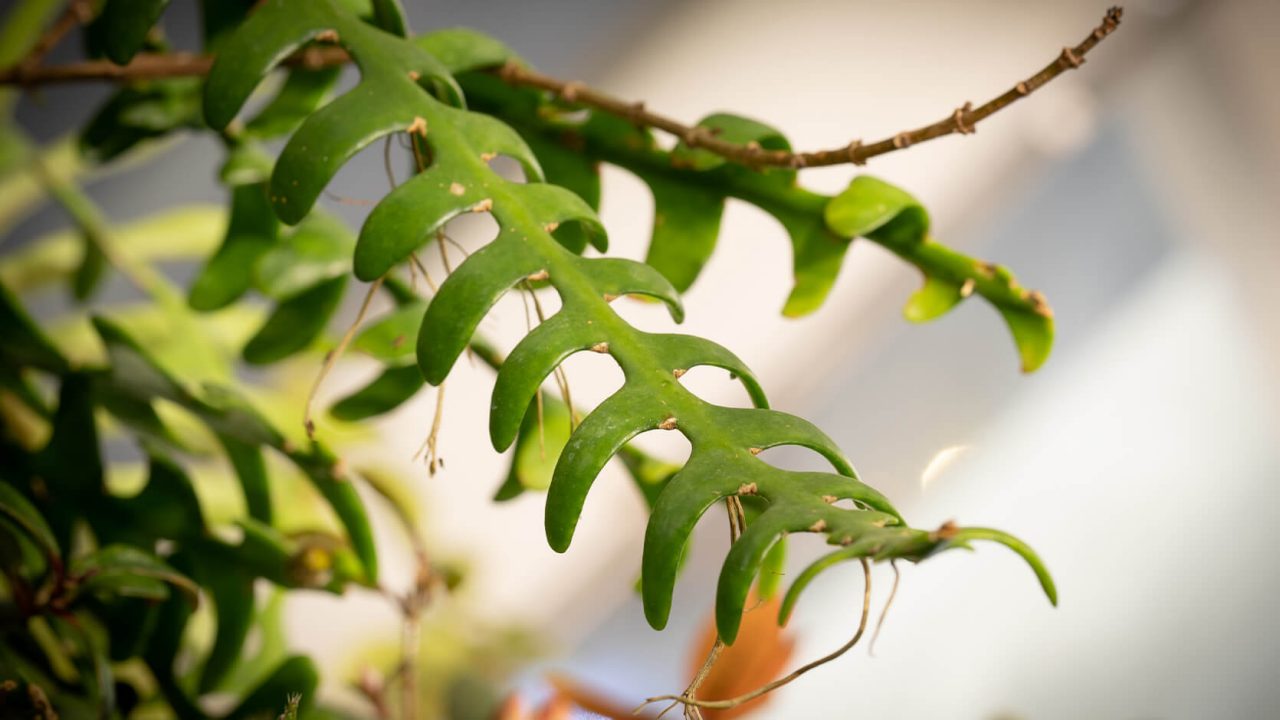Fishbone Cactus (Selenicereus anthonyanus)

Selenicereus anthonyanus is a member of the Cactus family (Cactaceae) originating from the tropical rainforests of Mexico, where the conditions are moist and humid. Unlike many of their cactus relatives, they do not thrive in an arid, desert climate. Similar to bromeliads and orchids, they are epiphytic in nature, growing on tree trunks and branches, but aren't parasitic-- their roots only anchor onto the tree branches to absorb water and dissolved nutrients.
The genus name, Selenicereus, comes from Selene, the Greek goddess of the moon and the Latin word 'cereus' means waxy; in reference to it being a night-blooming cactus with waxy stems. This genus consists of epiphytic, lithophytic and terrestrial cacti, mainly from Mexico, Central America, the Caribbean, and northern South America. A number of species of Selenicereus produce edible fruits and are collectively known as pitaya in Spanish or dragon fruit. Red, white, and yellow-fleshed dragon fruit each come from a different Selenicereus species.
 The unique, flat, deeply lobed, leaf-like stems of this cactus are thick and leathery in texture. This feature gave rise to its common name ‘Fishbone Cactus’ as the pattern of the stems along a central axis resembles a fish spine.
The unique, flat, deeply lobed, leaf-like stems of this cactus are thick and leathery in texture. This feature gave rise to its common name ‘Fishbone Cactus’ as the pattern of the stems along a central axis resembles a fish spine.
Each flower is about 8-10cm in diameter and borne along the stem margins. The red, recurved outer tepals, cream-colored inner tepals, and starry white stigma give each flower a pleasing ombré effect! The scaly flower stalks are covered with wool and bristles, with short spines in their axils.
Find the fishbone cactus blooming near the archway to Cloud Walk in Cloud Forest’s Lost World!
 A nocturnal-flowering plant, their flowers open at dusk (around 7-8pm in Singapore), releasing a pleasing fragrance to attract nocturnal pollinators.
A nocturnal-flowering plant, their flowers open at dusk (around 7-8pm in Singapore), releasing a pleasing fragrance to attract nocturnal pollinators.
Written by: Ziana Yacob, Acting Senior Manager (Research and Horticulture)
Ziana's fascination with the many wonders of plants led her to study Horticulture. She has been involved in propagating plants and nurturing our in-house orchid collections. Keeping plants alive is a challenge and she's constantly learning about what she should or shouldn't be doing!




